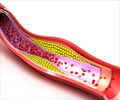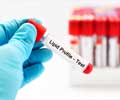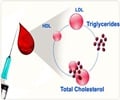A new study has said that body fat is a poor gauge for detecting high cholesterol levels in children.
A new study has said that body fat is a poor gauge for detecting high cholesterol levels in children.
"We found, actually, that using body mass index to find kids with high cholesterol does not work well. There were many overweight and obese kids who had normal cholesterol, and there were a fair number of healthy-weight kids who had high cholesterol," said University of Michigan paediatrician and study's lead author Joyce Lee.The study was carried out after the American Academy of Paediatrics revised its cholesterol screening guidelines in July 2008, advocating a cholesterol check for kids who have increased risk of heart disease.
For the most part, that means all children who are overweight or obese, which is about 30 percent of kids in the U.S.
"Our results indicate that the AAP guidelines for cholesterol screening in kids may need to be revised. Otherwise, we may be missing high cholesterol in some kids and unnecessarily testing others," Lee said.
The researchers conducted the study with national data from thousands of children to see whether 'body mass index' (BMI), a measure of body fat based on height and weight, can be used as a reliable way to find kids with high cholesterol levels.
They looked at the relationship between BMI and two different cholesterol measures, including total cholesterol and low-density lipoprotein (LDL) cholesterol, i.e. "bad" cholesterol.
Advertisement
Children had abnormal levels if they had total cholesterol greater than 200 mg/dl or LDL cholesterol level of greater than 130 mg/dl.
Advertisement
The study appears in the August 3 edition of the Archives of Paediatric and Adolescent Medicine.
Source-ANI
RAS















